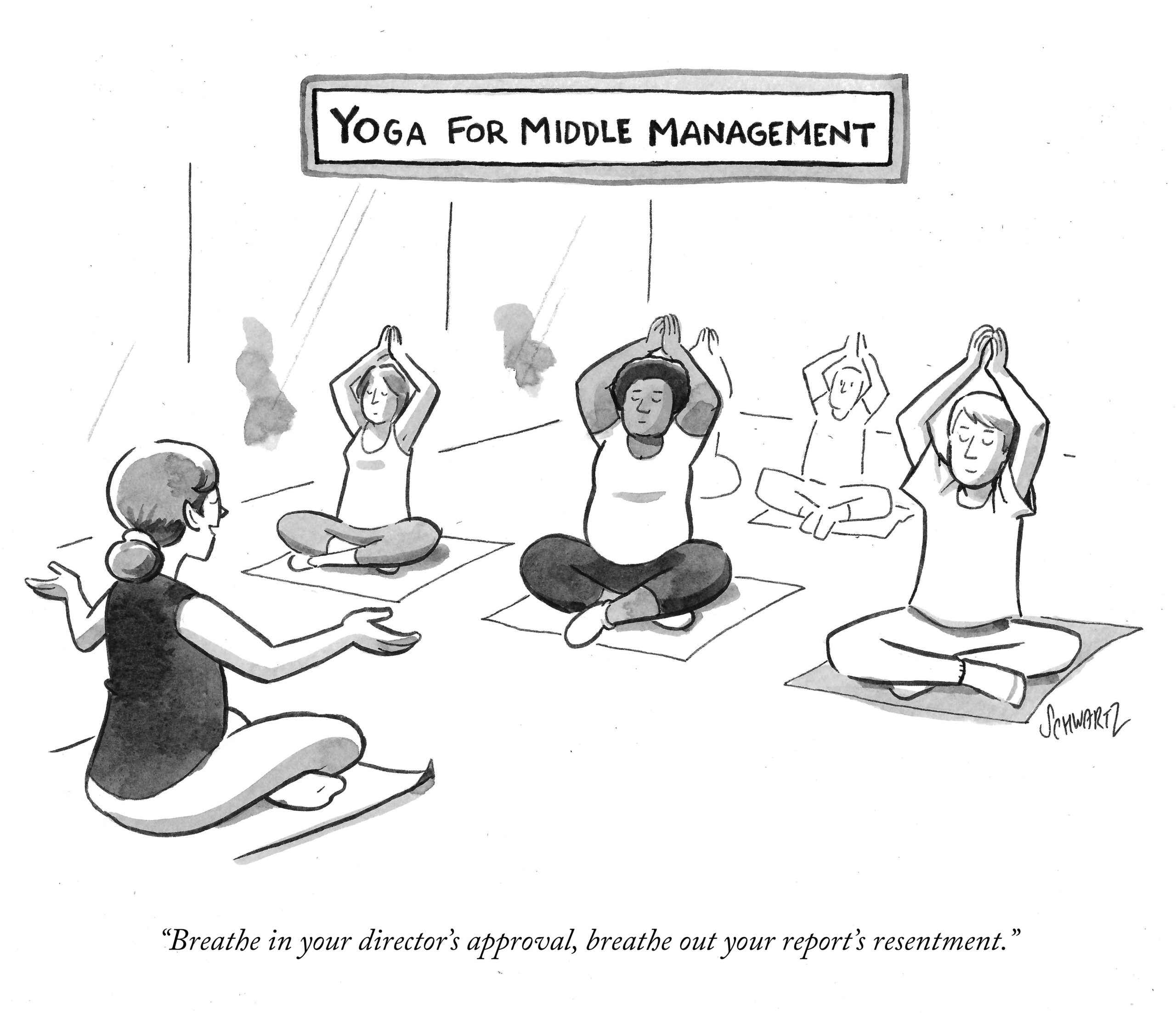Workplace trends
Gen Z is starting to consult with companies about Gen Z
Businesses are turning to self-proclaimed Gen Z experts for guidance in addressing the widening gap between the younger and older generations in the workplace. With Gen Z and millennials now comprising 46% of the US workforce, companies are becoming increasingly worried about Gen Z’s skepticism towards authority, reduced loyalty, and impatience for advancement, fearing public backlash from young employees and consumers alike. These “Gen Z advisors”, gaining traction with major companies like LinkedIn, PepsiCo, and Snapchat, offer insights into Gen Z’s expectations and preferences, helping organizations remain relevant and competitive in an evolving workforce landscape.
Companies are trying to address employee angst
Unemployment climbed to 4.1% in June, – the highest since 2021 – leading many workers to feel trapped in their current roles. In fact, voluntary turnover dropped from 17% in 2022 to 12% in 2023, according to management consulting firm Aon. To combat growing employee frustration, companies are starting to implement creative engagement strategies. For example, Synchrony Financial, with its 20,000-person workforce, is pushing interdepartmental job swaps, McKinsey is expanding its mobility budget to facilitate employee relocation for new projects, and Allstate is prioritizing career growth with an internal tool that showcases open projects across teams to encourage role diversification. These initiatives reflect a growing trend among companies trying to keep talent content in the challenging economic environment.
The AI corner
CIOs are seriously profiting from the AI revolution
With the AI boom significantly increasing the responsibilities of Chief Information Officers (CIOs), since 2019, their salaries have surged more than 20%, according to Heller Search Associates. This rise in compensation parallels a shift in reporting structures, with approximately 63% of U.S.-based CIOs now reporting directly to their CEOs instead of CFOs or COOs, based on Deloitte survey data. Experts say these changes underscore the expanded role of CIOs in managing AI initiatives, such as preparing enterprise data for AI use, overseeing cybersecurity and financial risks, and training employees to utilize AI tools like chatbots. And with a limited number of tech leaders proficient in generative AI, experts say the high demand for their expertise is likely to continue driving up compensation.
AI is the new teacher’s pet
AI isn’t just a student’s shortcut, teachers are actively embracing it too – leveraging the technology to score students’ work, critique arguments, and analyze sentence structure for faster feedback and reduced assessment bias. Education AI startups primarily provide teachers with tools for grading writing-heavy subjects like History and English, with some branching into math and science. While these tools undoubtedly make teachers’ lives easier, educators generally agree that the primary goal is to help students become better writers. Critics warn that over-reliance on these education AI tools can undermine trust in the education system, but AI founders and CEOs are stressing that their tools are there to complement, not replace, teachers’ roles in grading and feedback.
The benefits of inexperienced candidates
Ever hired someone without relevant work experience?
A recent analysis of close to 4 million jobs posted on LinkedIn in the last few years showed that 35% of postings for entry-level positions ask for prior experience, and for entry-level software and IT service jobs, 60% of job postings require at least three years of work experience. Even in job listings that call for “0-2 years of experience,” there’s typically an unspoken understanding that it doesn’t really mean zero.
But in today’s constantly evolving world of work, prioritizing individuals with previous work experience may hold you back. Because while a proven track record certainly has merit, it also often leads hiring managers to overlook an essential gem: potential. A recent study by Harvard Business Review found a very weak relationship between prior experience and success in a new role, and as AI continues to automate many of the tactical tasks associated with most entry-level positions, other skills may be more crucial. Candidates with high levels of emotional intelligence and an eagerness to learn, for example, could provide more value to your team than those with more technical skills and work expertise.
So, what are the key benefits of hiring people without experience?
Greater moldability
Unlike those with lots of technical qualifications, candidates without significant work experience don’t bring past employer baggage with them, which means when they join your team, they’re starting on a clean slate. This makes them more moldable to your team’s needs and often more open to contributing to multiple areas of the company in order to discover both their greatest strengths and where they can bring the most value. Additionally, their lack of experience can translate to less defensiveness when it comes to feedback and greater receptiveness to alternative approaches.
More motivation
When candidates don’t join your team with an impressive track record or a sense of job mastery, they’re often more engaged and motivated to excel. In fact, a Gallup report found that new hires are actually the most engaged employee segment. If you take a chance on these team members, they’ll likely feel more committed to proving that you made the right decision, and their excitement can lead to greater skills development and impact in the long run.
New perspective
The lack of experience that these candidates bring to the table can actually help them provide new perspectives and outlooks. Their fresh eyes can lead them to ask critical questions that those already immersed in the company or industry may overlook. It can also allow them to offer creative solutions to problems and uncover hidden opportunities that those bogged down by years of experience may not think to consider.
Talent diversity
Being open to candidates without technical expertise can also open the door for more diverse talent and create opportunities for those who might not otherwise have had a shot. For example, low-income students who can’t afford flashy, uncompensated summer internships could still have highly relevant skill sets, perspectives, and promise. Forbes research shows that diverse teams deliver 60% better results, and data from McKinsey shows that diverse companies are 36% more likely to financially outperform their less diverse peers. So, prioritizing soft skills and potential, rather than technical experience, can enable a more diverse talent pool to bring tremendous value to your team.
Cost-effective
When the resume of someone who clearly doesn’t have relevant work experience reaches your inbox, you may be concerned that the applicant would need a lot of hands-on training and support. And while the need to invest more in their development is certainly something to consider, that cost is often outweighed by the lower salary expectations of these inexperienced candidates. Additionally, 94% of employees said they would stay at a company longer if it invested in helping them learn, per LinkedIn’s Workforce Learning Report, which is why doing so from the start can help you increase employee loyalty and retention.
So, how can you get the most value from your inexperienced hires? Try to create a balanced team of less experienced and more experienced employees working together to maximize the benefits of each and allow them to complement one another. Ask your team members with more years under their belts to help guide the less experienced joiners and share their best practices. And at the same time, encourage those experienced team members to ask new joiners to weigh in on strategies and approaches when relevant, because getting fresh perspectives can often prove extremely informative and beneficial.
Water cooler chatter
14 sculptures looted from Cambodia during a war have been returned by the MET. The repatriation of these century-old statues followed years of negotiations between Cambodia’s art restitution team, investigators from the US Department of Homeland Security, US federal prosecutors in New York, and the Metropolitan Museum of Art.
Alec Baldwin’s involuntary manslaughter trial has been dismissed over hidden evidence. A key aspect of the case has been how live ammunition ended up on the set and Baldwin’s lawyers alleged police and prosecutors hid a batch of bullets that could have been connected to the shooting. The actor will not be tried again.
Question of the week
Last week’s answer: 30%
This week’s question: What percent of employees are at high risk of burnout?
Just for laughs

Managers breathing in and out the struggles
Don’t miss more quality content!

